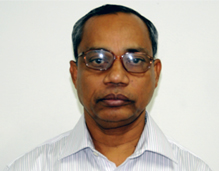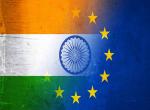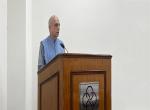In a very significant development which will give an impetus to India-Sri Lanka relations, Prime Minister Narendra Modi is inaugurating the direct flight from Sri Lanka to Kushinagar on 20th October. A number of high dignitaries and Buddhist monks from Sri Lanka will grace the occasion. Kushinagar is a major pilgrimage site that attracts a high number of Buddhist pilgrims including from Sri Lanka every year. It is believed that Gautam Buddha had attained Mahaparinirbana in Kushinagar after his death.
Earlier this month foreign secretary Harsh Vardhan Sringla paid a four day visit from 2nd October to 5th October to Sri Lanka to review the bilateral relationship in its entire gamut. The visit was a part of India’s policy of ‘Neighborhood First’ and Security and Growth for All in the Region (SAGAR). Mr. Shringla met President Rajapaksa, Prime Minister Mahinda Rajapaksa and other high senior officials including his Sri Lankan counterpart. In his meeting with President Rajapaksa, Mr Shringla reiterated India’s position “on complete implementation of the provisions of the 13th Amendment to the Constitution, including devolution of powers and the holding of the provincial council elections at the earliest.” [1] The Foreign Secretary’s visit was followed by the visit of Chief of the Army Staff of the Indian Army General Manoj Mukund Navrane, who called on Sri Lankan President Rajapaksa and Prime Minister Mahinda Rajapaksa, besides his Sri Lankan counterpart and other Sri Lankan officials. His visit coincided with ‘Mitra Shakti’, the bilateral military exercise between the two armies.
Although India-Sri Lanka relationship has its own narrative woven rooted in geographical proximity, cultural affinity, historical and political convergence, China has been an important factor in Sri Lanka’s foreign policy overtly and covertly. Beijing’s footprints in Sri Lanka, during and after the internal civil war in the in country, have been quite disconcerting for India. The scrapping of India-Japan MoU by Sri Lanka on the East Coast terminal in February this year had somewhat cast shadow on the bilateral relations between the two countries. Sri Lanka, however, made good the loss by offering the West Coast Terminal to Adani Group of India. There were also concerns with regard to slow progress of other Indian projects while Chinese projects were getting clearances expeditiously. It is against this backdrop that this essay attempts to put in perspective the narrative of the India-Sri Lanka relationship.
Sri Lanka in India’s ‘Neighbourhood First’ Policy
Ever since Prime Minister Narendra Modi came to power in May 2014, New Delhi has reached out to Sri Lanka in a very proactive manner in its ‘neighbourhood first’ policy. Prime Minister Narendra Modi invited President Rajapaksa, among the SAARC leaders to grace his swearing in ceremony as Prime Minister of the country in May 2014. During his first tenure as the Prime Minister, he visited Sri Lanka twice, first in March 2015 and later in May 2017. In his first visit, he announced India’s fresh Line of Credit of up to US$ 318 million for railway sector in Sri Lanka. He also announced currency swap between Reserve Bank of India and Central Bank of Sri Lanka to keep Sri Lanka rupee stable. Prime Minister Narendra Modi also met Mr. Mahinda Rajapaksa on the sidelines of the 69th UN General Assembly session in New York on 27th September and later at the 18th SAARC Summit in Kathmandu on 26th November 2014. Prime Minister Modi invited Sri Lankan President Maithripala Sirisena, among the BIMSTEC leaders, for his second swearing in ceremony in May 2019.
Prime Minister Modi visited Sri Lanka in May 2017 for the second time of his first tenure to participate in the Buddhist conclave on the occasion of International Day of Vesak. This visit speaks of PM Modi’s adoption of soft power approach as part of India’s external outreach with focus on spiritual dimension. Yet another aspect of Prime Minister Modi’s engagement with Sri Lanka is irrespective of regime change, he has maintained relationship with the leaders of both ruling party and the opposition. While maintaining cordial relationship with both Rajapaksa and Maithripala Sirisena, he has promoted the larger interests of the two countries and their people.
The results were evident when President Gotabaya Rajpaka chose India as his first port of call in November 2019 after his electoral victory, and not China. His visit to India was followed by the visit of the Foreign Minister of Sri Lanka Dinesh Gunawardena in January 2020. Following the Parliamentary elections in August 2020 in Sri Lanka, Prime Minister Modi hosted his counterpart Mahinda Rajapaksa who assumed the position for the fourth time, in a virtual bilateral summit amidst COVID-19 on 26th September last year.
India’s Humanitarian Support to Sri Lanka
India’s engagement in Sri Lanka, however, suffered temporarily due to ethnic strife in the island. India, however, is executing a number of humanitarian developmental projects in Sri Lanka after the termination of ethnic war in Sri Lanka. Developmental cooperation is one of the most important aspects of India- Sri Lanka relations. The Indian Housing Project in Sri Lanka is the largest grant project of India in any country. India has committed over 60,000 houses in Sri Lanka. Out of this 49,112 houses have already been completed as per the Annual Report of Ministry of External Affairs for the Year 2020-21. The houses under this project were aimed at providing shelter to the households of Tamils who were internally displaced because of the three decades long civil war that ended in May 2009. During the visit of Foreign Secretary Harsh Vardhan Sringla to Sri Lanka, more than 1,200 houses and two colleges set up by it as part of India’s developmental efforts were handed over. India gifted four consignments of essential medicine/medical gloves and other items weighing over 25 tons in total to Sri Lanka. In January 2021, India sent 500, 00 doses of Covishield vaccines as grant assistance to Sri Lanka.
There are discernable differences the way India and China reach out and engage with Sri Lanka. While China engages in capital intensive projects as it has the requisite resources, Indian engagement in Sri Lanka is humanitarian and developmental oriented in nature dedicated to human settlement and welfare of the people.
China’s strategic footprints in Sri Lanka
The growing strategic presence of China in Sri Lanka has its resonance on India’s security imperatives. New Delhi cannot afford to ignore Beijing’s increasing presence there. Ever since the concept of ‘string of pearls’ gained currency, there have been some concerns among strategic analysts and commentators about China’s support in the construction of the Hambantota port in the Indian Ocean in Sri Lanka. There is a concern that it may be detrimental to India’s security interests. While the harbour is an engineering marvel, analysts view it as an instance of the growing nexus between the two countries. China lent $360m for the first phase of the project. The Chinese involvement in building the Hambantota port is estimated to cost $ 1 billion, to be built in four phases over fifteen years. The project, which envisages building oil and gas terminals, berths and port facilities, like Gwadar in Pakistan, has potential for dual use[2]. The port in Hambontota, deeper than one at Colombo, is to be used as a refueling and docking station for its Navy. Though China and Sri Lanka claim that this is merely a commercial venture its future utility as a strategic asset for China cannot be ruled out[3]. According to a report in New York Times, with tens of thousands of ships passing by along one of the world’s busiest shipping lanes, the port drew only 34 ships in 2012. [4]
The strategic depth of bilateral ties between Sri Lanka and China was reiterated during the visit of Chinese Foreign Minister Wang Yi to the island nation in January 2020. With an oblique reference to India, the Chinese Foreign Minister pledged not to allow “any outside influences” to interfere with Sri Lanka’s internal matters. Wang Yi reportedly said, “As Sri Lanka’s strategic partner China will continue to standby Sri Lanka’s interests. China stands by the country’s sovereignty, territorial integrity and independence. We will not allow any outside influences to interfere with matters that are essentially internal concerns of Sri Lanka”. In recent times there is great deal of concerns over Colombo’s outstanding debts to China over several large-scale infrastructural projects, including the port in the southern town of Hambantota, for which China holds a 99-year lease. [5]
The growing penetration of Chinese influence in Sri Lanka is also a matter of concern to Sri Lanka’s Tamil diaspora. It was reported in the media recently that in a note to States, a Central agency referred to a conclave of the Sri Lankan Tamil diaspora held in London and said that the delegates felt that India had not taken serious steps to safeguard the interests of the Sri Lankan Tamils and even lost its influence over the island nation. The conclave was convinced that the fate of the Sri Lankans would be in jeopardy if the Chinese established their presence in the northern Sri Lanka. [6]
Striking a fine balance between two mighty neighbours, Sri Lanka’s President Rajpaksa as early as in 2010, said, ‘we are a non-aligned country. Our neighbours are Indians. I always say, Indians are our relations. From the time of Asoka, we have had that culture… but that doesn’t mean we won’t get commercial benefits from others. From China, or Japan, or whoever. They will come here, they will build, and they will go back. India comes here, they will build and they will stay, this is the difference (emphasis added)… [7].
Two Recommendations
1. Revive South Asia Speaker’s Conference and Engage Sri Lankan Parliament
Considering the fact that Sri Lanka is vibrant democratic country with a robust multi-party system, and India’s cultural and civilizational linkage, it is strongly recommended that India should engage with Sri Lankan Parliament, both bilaterally and multilaterally through the SAARC Speakers and Parliamentarians’ Conference which is now defunct. Sri Lanka had hosted the first South Asia Speaker’s conference in 1993. The charter of the Conference provides that the Conference shall meet once a year. At a time when China has penetrated into South Asia, the revival of the South Asia Speaker’s Conference will be a thoughtful diplomatic and Parliamentary outreach to the legislators of the South Asian region including Sri Lanka, the importance of which can hardly be overemphasized. Unlike interaction between diplomats and bureaucrats, the interaction between and among Parliamentarians in are informal by nature and earning their goodwill will be beneficial to untie a knotty issues.
2. ICCR should invite Yohani de Silva, Sri Lanka’s rap singer
In a soft power outreach, the Indian Council of Cultural Relations (ICCR) should invite the Yohani Diloka de Silva, as and when the situation permits, the Sri Lankan rap singer whose music video Manike Mage Hithe has become viral with more than 100 million hits within few months of its release in May 2021 with its rendition to almost all Indian vernacular versions.
End notes
[1] ‘Must look at weakness and strengths of 13thA’, The Hindu, October6, 2021, https://www.thehindu.com/news/national/must-look-at-weaknesses-and-strengths-of-13a-gotabaya-tells-shringla/article36848554.ece
[2]Vijay Sakuja, China’s Diplomatic and Strategic Balancing Acts in Southern Asia, Foreign Affairs Journal, Vol. 4, No. 3, July-September 2009, pp.54-55
[3]Harsh V Pant, The Importance of Being Sri Lanka, The Business Standard, New Delhi 4th July 2010
[4] Maria Abi-Habib, “ How China got a Sri Lanka to Cough Up a Port”, New York Times, June 25 2018
[5]The Hindu 15 January, 2020
[6] “China’s presence in Sri Lanka raises concerns,” The Hindu, October 11, 2021, https://www.thehindu.com/news/national/chinas-presence-in-sri-lanka-raises-concerns/article36936797.ece
[7] India’s views matter, don’t care about the world’, The Times of India, 28 June 2010, https://timesofindia.indiatimes.com/india/indias-views-matter-dont-care-about-the-world-rajapaksa/articleshow/6099633.cms
Image Source: https://commons.wikimedia.org/wiki/File:The_former_President_of_Sri_Lanka,_Mr._Mahinda_Rajapaksa_meeting_the_Prime_Minister,_Shri_Narendra_Modi,_in_New_Delhi_on_September_12,_2018.JPG










Post new comment